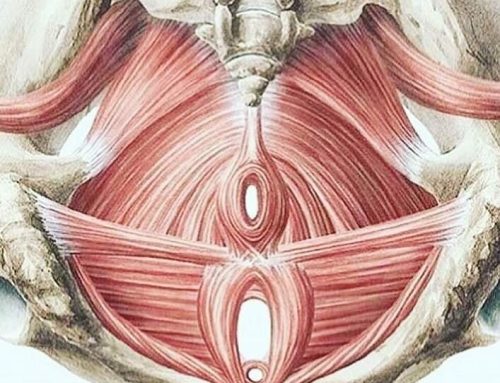Breathwork has exploded onto the wellbeing scene in recent years – despite being around as a practice for some time. More than an evolution of classical pranayama, it has taken on a life of its own and has evolved many branches and schools. I asked my friend and co-facilitator Giselle Monbiot to explain what breathwork entails, the experiences it creates and how it can be used on the path of healing and awakening.

What is breathwork and why is it suddenly so popular?
Breathwork is a generic term about using your breath in different ways: to energise, come into balance and calm down. Conscious connected breathwork which is the approach I use is extremely gentle, it’s not actually about what happens in the breath but how you integrate it afterwards that really makes the difference. As we change the way we connect to our body, we change the way we see ourselves and others. We move from activation to calm and repeat with grace, taking the time to notice the sensations in the body, breathing into them, towards not away from the body and allowing space to trust the wisdom of the body and the way in which it knows how to release potentially many years of stored stress and tension
How is it different to classical yogic pranayama?
In conscious connected breathwork, there is no pause between the inhale and the exhale which helps you to connect to the unconscious. And it is done lying down. Embarking on an inward journey. Pranayama focuses more on the mind and breath control and usually takes place in a seated position.
What does a typical breathwork session involve?
It starts off with everybody understanding what the process will involve so that everyone feels safe and connected. Then it is about thinking about the intention, what they want to get out of the session although often times it is about trusting that the body will know what it wants to release and heal during the session. The first couple of minutes will be about calming and grounding the breath and then focusing on the circular breath as the mind tends to want to get busy at this stage. Physical sensations such as tingling, involuntary movement or emotions may start to be felt. In the last 15 mins, normal breathing is resumed in a deep meditative state as we start to integrate the whole experience. Some people like to journal this. The final part is a group chat about the experience of the session.
What benefits can be achieved by practicing breathwork?
Physical benefits: increased energy, strengthening of the immune system, access to body memories for release and healing.
Mental and emotional benefits: Altering the brainwaves, in particular about our default sense of self and enabling us to go beyond the monkey mind. Release of unfelt emotions like anger through tears, allowing for all feelings with compassion.
Spiritual benefits: Making the unconscious conscious on an individual level and uniting the group in a beautiful humankind connection.
Is breathwork a spiritual practice?
Not per se but the deeper your connection and ability to move beyond the mind, the greater likelihood for experiencing spiritual awareness.
Are there any contraindications or cautions to practising breathwork?
While Conscious Connected Breathwork can be a deeply transformative and beneficial practice, it is important to be aware of certain contraindications and precautions. Here are some general contraindications to consider:
Cardiovascular Conditions:Individuals with a history of cardiovascular problems, such as heart disease, high blood pressure, or stroke, should exercise caution and consult with a healthcare professional before participating in intense breathwork practices.
Epilepsy or Seizure Disorders: Breathwork techniques involving intense breathing patterns can potentially trigger seizures in individuals with epilepsy or seizure disorders. It is crucial for those with such conditions to consult with their healthcare provider before engaging in breathwork practices.
Recent Surgeries or Injuries: If you have undergone recent surgery or have any acute injuries or physical conditions that may be aggravated by intense breathwork or physical movement, it is advisable to wait until you have fully recovered or consult with a healthcare professional before participating.
Pregnancy: Pregnant individuals should approach breathwork practices with caution, especially those involving intense breath patterns or physical movement. It is recommended to consult with a healthcare provider to determine whether breathwork is suitable during pregnancy.
Mental Health Conditions: While breathwork can be beneficial for emotional healing, individuals with certain mental health conditions, such as schizophrenia, bipolar disorder, or dissociative disorders, may need to approach breathwork practices with caution. It is essential to consult with a mental health professional to ensure the practice aligns with your specific needs.
Respiratory Conditions: Individuals with severe respiratory conditions, such as chronic obstructive pulmonary disease (COPD), severe asthma, or other lung disorders, should approach breathwork practices with caution. It is recommended to consult with a healthcare professional before engaging in intense breathwork.
If anyone has any further concerns then please feel free to contact me directly on giselle.monbiot@googlemail.com
Can you specify how conscious connected breathwork differs from other forms?
CCB is focused on the circular breath in a very slow and gentle manner
Are there any side effects of the practice?
Aside from acknowledging any potential contraindications, the side effects are releasing chronic stress, a deeper sense of peace and relaxation, and liberating emotional healing.
Giselle will be leading a 2-hour introduction to breathwork at our Hampshire Heart Yoga & Breathwork day-retreat on Sunday 22 September.
This will be a powerful and heart opening gathering in the most beautiful countryside setting just 90 minutes from London.
To find our more about our day retreat please follow this link:





